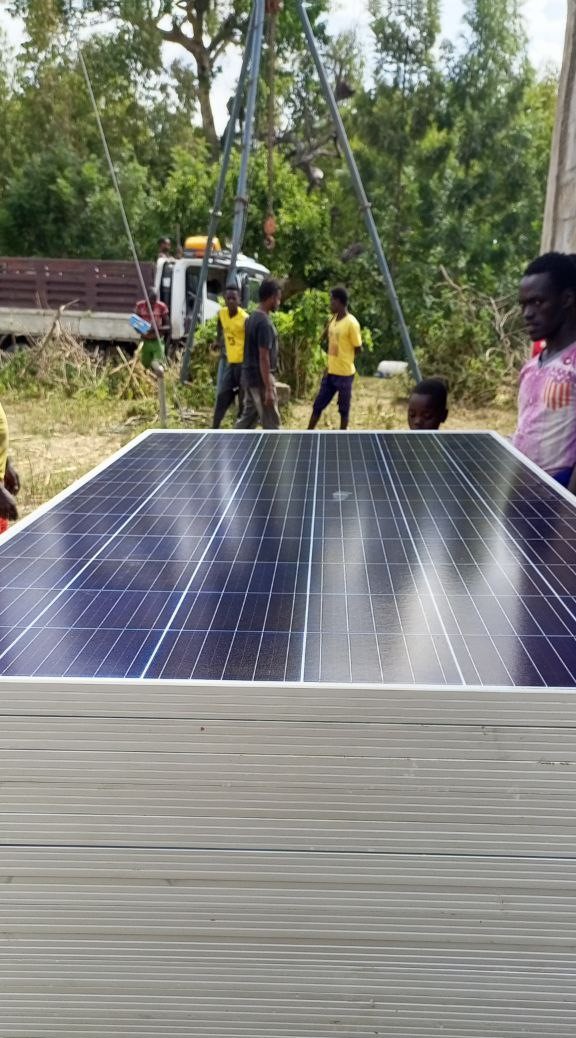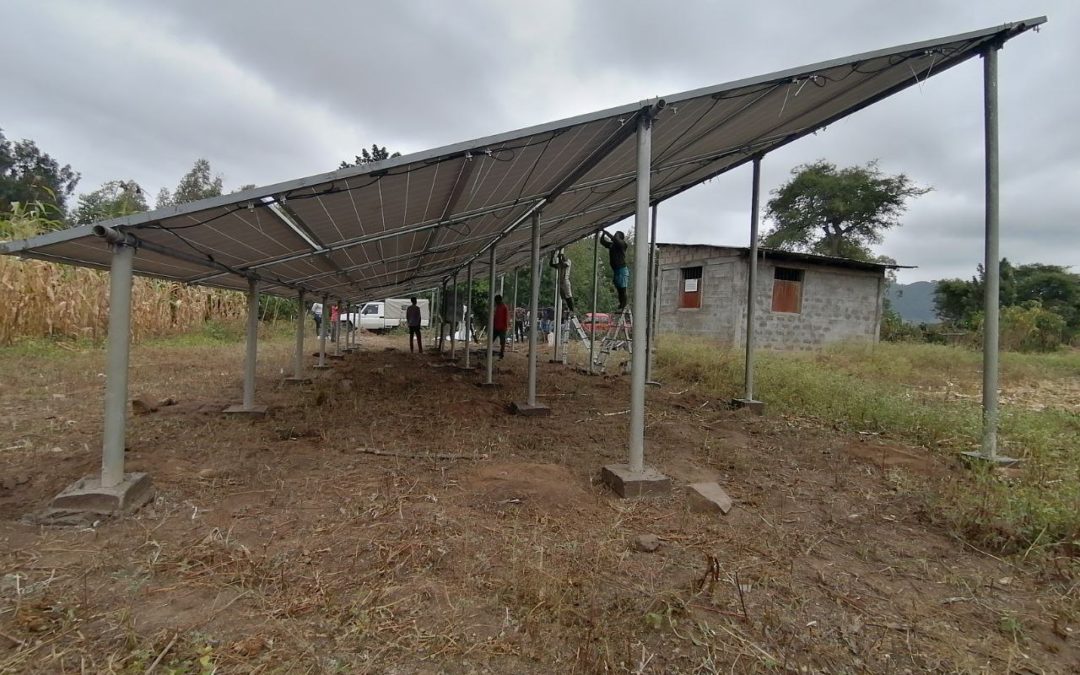Written by Tilahun Bishaw, Branch Head at South Omo Branch and Baherwessen Weldaregay, Skybird Micro Project Coordinator for South Omo Branch
Kayssa Town is one of the Kebeles of Baka -Dawela Ari District, and also the capital town of the district. The town has a total population of 6148 (2,223 male and 3,925 female). Agriculture and cattle breeding is the major economic activity of the town.
There is lack of access to adequate drinking water services in the area. The community uses unprotected water sources such as sandy water “Chirosh”, springs and rivers to obtain water for domestic use. These sources are shared by animals and humans which poses health risks. Furthermore, the average amount of time spent on looking for water from these unprotected sources is between 45 minutes to one hour.
Kaysa town has encountered these problems for the last four years, mainly due to non-functionality of the existing scheme as a result of high fuel consumption and high operational cost of existing diesel generators, the cost of fuel, oil, oil filters and maintenance for water pumping from a deep well and the destruction of water distribution lines. Additionally, a lack of awareness on operation and maintenance (O&M) of existing diesel generators among beneficiaries and increased storage requirements due to low pump volume of existing generators were also identified. These costs are unaffordable to the low-income community of Kayssa town. Moreover, this resulted in limited participation of children, girls and women in educational, social and developmental activities.

Why we chose a solarized system
To provide a solution for the above-mentioned problems, a solar powered water pumping system was chosen for the South Omo branch Skybird Micro Project, as this is a cost effective and environmentally friendly system. The Skybird team agreed that solarizing the water scheme could solve the root causes mentioned above that leads to the existing water scheme being non-functional for several months and years. The major motivating factors to choose solar pump are: the production of clean energy with zero exhaust gases or pollutants, zero fuel consumption, high initial cost but small maintenance cost that may be required every 1 or 2 years and it is simple to operate the pumping system by local operators.
Benefits of a solarized system & Sustainability Measures
The annual average daily radiation reaching the ground, at the specific location of the project, is estimated to be around 5.5kwh/m2/day. It varies from a minimum of 4.5kwh/m2/day in July and August to a maximum value of 6.5kwh/m2/day in February and March. As a result, solarizing the existing diesel generator is more efficient to access potable water for the community and to have an environmentally friendly system.
For the solar pump system to operate sustainably, 3 solar operators (2 male, 1 female) and a water line repairer are selected and trained under the project. The community selected the water point committee with 5 male and 7 female members as well as a steering committee with 4 male and 3 female members. The criteria for selection were: a minimum 50% of the committee to be females; members should be able to read and write and accepted by the community. After selection, the project provides training on how to operate and manage the water supply system, fee collection and saving practice to work for the sustainability of the water scheme. Regarding price determination, the community as well as existing water providers participated in order not to distort the supply chain system which already existed in the area, keeping the public private partnership for water supply in to consideration.


Challenges
At the beginning of the project, it was important to develop trust among the community because this solar powered water system is the first in this area. In the end the community was convinced and contributed to the success of the project.
The previous design of the water system didn’t consider residents living near the borehole and there was no water point constructed for them. Therefore, through this project, discussions were held with the local government and community representatives. After the discussion, the project partner Austria Red Cross granted additional budget and the local government also contributed some money to construct one water point for the target communities around the borehole. Finally, they were able to access water from the nearest water point.
As Red Cross is auxiliary to the government, working closely with local officials is expected, however officials are politically appointed people who are vulnerable to be replaced frequently. This made it a bit challenging until the newly appointed ones are onboard and understand the content of the project.
Community and stakeholders participation/ CEA/
The community participated in every step of the implementation by adding their ideas and labor to the success of the project. In detail, the community contributed the following:
- Excavation work of the 314 meter main pressure line and distribution network
- Local fencing work which measures 1200 m2 around the solar farm by bringing wood collected by the community
- Loading and unloading of construction materials
- The tribal leaders have implemented a traditional culture for the community to protect the water system as its own property
- Throughout the project implementation, 376 (264 male, 112 female) people participated in different activities
- Total contribution from the community estimated to be 179,826 ETB (3.458 EUR)
- Zonal administration supported in cash with 190,000 ETB (3.672 EUR)
- Zonal water, mine and energy office provided technical advice and a crane to remove the pipe from the borehole which is estimated to be 310,000 ETB (roughly 6.000 EUR)
- The district leader supported with a vehicle and the water office took responsibility to identify the right WASHcos
- In total, the contribution of local government offices and the community in cash is estimated to be 67,9825 ETB (13.073,57 EUR) which is about 16% of the total budget of the micro project.


Recommendations
We highly recommend to create awareness with the local community and government bodies about solar powered water pumping systems. Not underestimating the costs, allocate adequate budget to purchase the solar pumping system because the initial cost of the system is normally high. Prepare the free space to install the solar array and other accessories. Road access is key to deliver equipment and other machinery. Assign well-trained volunteers and/or staff and professionals who lead and support on development, evaluation and installation of the system. The system is environmentally friendly and has low O&M cost.
